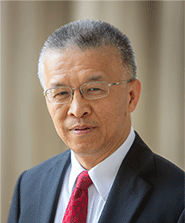
Gang Chen
Massachusetts Institute of Technology
Presentation Title: Tailoring Photons from the Sun and Terrestrial Sources with Nanostructures for Energy and Water Nexus
Abstract: Human history has very much depended on how we used heat from the sun and terrestrial sources. Over 90% of human society’s energy input is used by first converting it into heat, and yet only 40% of the total energy input is utilized, significantly lower than what the second law of thermodynamics allows. This presentation will give examples in engineering photons from the sun and terrestrial heat sources with nanostructured materials, aiming to address challenges in energy and water nexus. To lower the cost of solar energy to electricity conversion, we use nanostructures to reduce the thickness of crystalline silicon thin-film solar cells and optically-transparent and thermally-insulating aerogels to replace the vacuum-tube solar collectors in concentrated solar thermal systems. For terrestrial thermal systems, we show that by reflecting infrared radiation back to its emitting heat source, we can significantly improve the efficiency of converting thermally-radiated photons into electricity via thermophotovoltaic devices and the luminous efficiency of incandescent light bulbs. We also demonstrate the ability of boiling water, even generating superheated steam, under unconcentrated sunlight. With properly chosen polymer fiber diameters, we design fabrics so that they are opaque to visible light and yet allow thermal radiation from human body to escape to environment for passively cooling. We conclude the presentation by exploiting the entropy-carrying ability of thermal radiation to convert heat into electricity using pn junctions.
Biography: Prof. Gang Chen is currently the Carl Richard Soderberg Professor of Power Engineering at Massachusetts Institute of Technology (MIT). He served as the head of the Department of Mechanical Engineering at MIT from July 2013 to June 2018, and director of the the “Solid-State Solar-Thermal Energy Conversion Center (S3TEC Center)” – an Energy Frontier Research Center funded by the US Department of Energy from 2009 to 2018. He obtained his PhD degree from the Mechanical Engineering Department, UC Berkeley. He was a faculty member at Duke University and UCLA, before joining MIT in 2001. He received an NSF Young Investigator Award, an Ramp;&D 100 award, an ASME Heat Transfer Memorial Award, a Nukiyama Memorial Award by the Japan Heat Transfer Society, a World Technology Network Award in Energy, an Eringen Medal from the Society of Engineering Science, and the Capers and Marion McDonald Award for Excellences in Mentoring and Advising from MIT. He is among Thomas Reuter’s highly cited researchers. He is a fellow of the American Academy of Arts and Sciences, an academician of Academia Sinica, and a member of the US National Academy of Engineering.
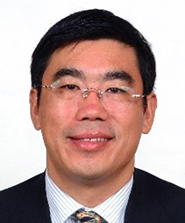
Zhanfeng Cui
University of Oxford
Presentation Title: Coupled Micro/Nanoscale Heat and Mass Transfer in Bio-manufacture
Abstract: Manufacture and processing of novel biological therapeutics becomes increasingly important as it does not only affect the costs of goods but decides the successful delivery to clinics and patients. The challenge is how to preserve the viability, potency and functionality of these complex entities to meet the regulatory requirements using available supply chains. A key to the success is actually the understanding and control of the coupled heat and mass transfer at micro/nanoscales.
In this presentation, three case studies will be presented. (1) cryopreservation of human stem cells, where heat transfer with phase change, freeze concentration and cell membrane transport are all coupled; (2) freeze drying of therapeutic proteins, where freeze concentration induced protein denaturation must be avoided; (3) three dimensional drying of vaccines, where evaporation, Marangoni flow and vitrification are all important to the vaccine potency. One common challenge to bioprocessing is the lack of data, in particular, transport properties. The other is the missing link between physical processing parameters to biological outcome. Both need multidisciplinary research effort on top of better understanding of micro/nanoscale heat and mass transfer.
Biography:Prof. Zhanfeng Cui is the Donald Pollock Professor of chemical engineering, University of Oxford since the Chair was established in 2000. He is the founding Director of the Oxford Centre for Tissue Engineering and Bioprocessing (OCTEB) and the Director of CRMI Technology Centre at the University of Oxford. He was educated in China and got his BSc degree from Inner Mongolia University of Technology (1982) and MSc (1984) and PhD (1987) from Dalian University of Technology. After a postdoctoral experience in Strathclyde
University in Scotland, he joined Edinburgh University as a lecturer in chemical engineering (1991). He then held academic appointments at Oxford Engineering Science Department as University Lecturer (1994–98) and Reader (1999–2000). He was a Visiting Professor of Georgia Institute of Technology, USA (1999), the Braun Intertec Visiting Professor to University of Minnesota, USA (2004), and a Chang-Jiang Visiting Professor to Dalian University of Technology, China (2005). He is a Chartered Engineer, a Chartered Scientist, and a Fellow of the Institution of Chemical Engineers (FIChemE), Fellow of the American Institute of Medical and Biological Engineering (AIMBE). In 2009, he was awarded a Doctor of Science (DSc) by Oxford University to recognize his research achievement. In 2013 he was elected to Fellow of the Royal Academy of Engineering (FREng). His research interests include tissue engineering and stem cell technologies, bioseparation and bioprocessing, as well as medical devices. He and his co-workers have published over 260 articles in refereed journal papers, and has founded two university spinout companies at Oxford.

Chih-Ming Ho
University of California
Presentation Title: Optimizing Complex Systems with AI Enabled PRS Platform
Abstract: A complex system composes of large number of interacting components, which self organize into a non-linear dynamic system. New properties emerge from the complex system and are not directly linked to the property of the individual component. After long-time evolution, the complex system is usually adaptive and robust. Biological systems, synthesized functional materials, internet, social activities and turbulent flows, are examples of complex systems.
Searching for the optimal parameter combination in order to have best system performance is a common challenge in complex systems. For example, how do we guide patient’s body by efficacious combinatorial drug toward a desired phenotype for improving health? Selecting the molecular compositions and determining the concentrations for each composition in material synthesis is another challenge of home in the optimal condition of a complex system.
Assisted by artificial intelligence, we have discovered that the inputs for controlling the complex system are correlated with the endpoint outputs through a Parabolic Response Surface (PRS). With a few calibration tests to determine the coefficients of the quadratic algebraic equation governing PRS, PRS is able to dictate the globally optimized input control parameters. The artificial intelligence enabled Parabolic Response Surface (AI-PRS) platform can be applied to optimize almost all complex systems with large parameter space.
Biography:Prof. Chih-Ming Ho received Ph.D. from The Johns Hopkins University. He held the Ben Rich-Lockheed Martin Chair Professor until retired in 2016 and currently is a UCLA Distinguished Research Professor. He served as UCLA Associate Vice Chancellor for Research from 2001 to 2005. His research interests include personalized medicine, microfluidics and control of turbulence. He is ranked by ISI as one of the top 250 most cited researchers worldwide in the entire engineering category (2000-2014). Dr. Ho was inducted as a member of the US National Academy of Engineering and an Academician of Academia Sinica. Dr. Ho received Doctor of Engineering Honoris Causa from Hong Kong University of Science and Technology. He holds ten honorary chair professorships including the Einstein Professorship from Chinese Academy of Science. Dr. Ho was elected Fellow of AAAS, APS, AIMBE, AIAA and 3M-Nano Society.

Yogesh Jaluria
Rutgers University
Presentation Title: Transport Processes in the Deposition of Micro/Nanoscale Thin Films
Abstract: Thin films are important in a wide range of practical applications and several techniques are available to obtain high quality films over relatively large regions. This paper focuses on the underlying basic transport processes in the Chemical Vapor Deposition (CVD) system, which is used for coating or for fabricating thin films for electronic and optical devices. The deposited film typically ranges from a few nanometers in thickness to a few microns. The quality of the film, as well as the rate of deposition, are strongly influenced by the transport processes that arise in the reactor. Several complexities are encountered in practical processes and systems, making the experimentation and modeling challenging and involved. These include property variations, complicated regions, combined transport mechanisms, chemical reactions, and intricate boundary conditions.
The chemical reactions and transport mechanisms involved in the deposition are quite different from those in the bulk flow. Thus, modeling has to be carried out at small length scales and then linked to the bulk convective transport. Coupling of the micro/nanoscale domain to the flow and heat transfer in the reactor yields the model that can be used for prediction, process control and optimization. Different numerical models are needed in different domains and appropriate boundary conditions need to be imposed at the boundaries between the different domains. The basic mechanisms may also change from the region near the deposition surface to the flow far downstream, with buoyancy often dominating the flow in some regions and radiation effects dominating near the source. Experimental data, particularly on the chemical kinetics, are critical to the accuracy of the simulation.
The paper presents the fundamental considerations that may be used to accurately simulate these systems for the deposition of materials like silicon, graphene, titanium nitride and gallium nitride. Validation of the numerical model is achieved by comparing with experimental and numerical results on similar systems in the literature. The changes in the material occur mainly at micro- and nanoscale levels, whereas the products being fabricated and the operating conditions are usually at the macro- or engineering scale. Depending on the dimensions, different flow regimes arise, with different analysis and experimentation being needed at different scales. The overall modeling and simulation is employed to determine the quality of the fabricated product, the effect on the environment, process efficiency and optimal conditions. The model is coupled with optimization, which is needed to minimize costs and improve product quality and system performance. Of particular interest are the achievement of high productivity, large percentage of area coverage for deposition and high film thickness uniformity. Of particular interest is multi-objective optimization, since these systems involve several important objective functions, such as those mentioned here. The importance of these results to practical CVD processes for various materials is discussed.
Biography: Prof. Yogesh Jaluria is Board of Governors Professor and Distinguished Professor at Rutgers, the State University of New Jersey. His research work is in the field of thermal science and engineering, covering areas like convection, fires, materials processing, thermal management of electronics, energy, and optimization of thermal systems. He is the author/co-author of eight books and editor/coeditor of thirteen conference proceedings, eight books, and seven special issues of archival journals. He has contributed over 500 technical articles, including over 210 in archival journals and 20 book chapters. His work has been supported extensively by federal, state and industrial agencies. He has received several awards and honors for his work, such as the prestigious 2007 Kern Award from AIChE, the 2003 Robert Henry Thurston Lecture Award from ASME, and the 2002 Max Jakob Memorial Award, the highest international recognition in heat transfer, from ASME and the AIChE. He received the 2000 Freeman Scholar Award, the 1999 Worcester Reed Warner Medal and the 1995 Heat Transfer Memorial Award all from ASME. He has served as Department Chairman and as Dean of Engineering. He was the Editor of the Journal of Heat Transfer (2005-2010), and Computational Mechanics (2003-2005). He is on the Editorial Boards of several international journals. He has served as Conference Chairman for several conferences including the ASME Micro/Nano Heat and Mass Transfer Conference, Hong Kong, 2014, and the International Symposium on Advances in Computational Heat Transfer, New Jersey, in 2015 and in Naples, Italy, 2017. He has presented many invited Keynote and Plenary lectures and has served on various panel discussions at international conferences. He is an Honorary Member of ASME, a Fellow of AAAS and APS, an Associate Fellow of AIAA and member of other professional societies.

Li Chen
Xi'an Jiaotong University
Prof. Li Chen is a Professor at Xi'an Jiaotong University (XJTU) China and Guest Scientist of Los Alamos National Lab (LANL) USA. He obtained his PH.D in Engineering Thermophysics at XJTU in 2013, followed by a Director Postdoc at LANL from 2013.12 to 2015.12. He was the winner of Young Scientist Award of Asian Union of Thermal Science and Engineering. His research focuses on transport phenomena in porous media with background of fuel cell, flow battery, CO2 storage and hydrocarbon resource exploitation. Particularly, he has developed an advanced pore-scale model based on the Lattice Boltzmann Method for coupled multiphase flow, heat and mass transfer, chemical reaction, solid precipitation-dissolution (melting-solidification) processes in porous media. Up to now, he has published 53 SCI papers in a variety of top journals, including Journal of Power Sources, Langmuir, International Journal of Hydrogen Energy, Journal of Computational Physics, Physical Review E, Fuel, Electrochemica Acta, Water Resources Research, International Journal of Heat and Mass Transfer. Among these SCI papers, one is selected as the “Top 100 International Journal Papers with Highest Influence, China, 2014”, one is selected as Most cited Paper of International Journal of Heat and Mass Transfer, and five are selected as ESI paper. His publications have been cited over 1650 times, with personal H index as 25. Furthermore, his research has also resulted in over 40 conference presentations (including 6 invited talks), 2 patents and 3 software copyrights. He serves as expert reviewer of about 20 international journals. He was invited as guest editor of special issue “Advances in Modeling of Transport in Porous Media” on an international journal “Computation”.
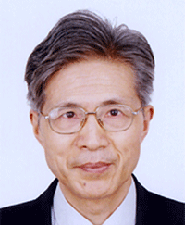
Wen-Quan Tao
Xi'an Jiaotong University
Prof. Wen-Quan Tao is a Professor at Key Laboratory of Thermo-Fluids Science & Engineering of MOE, and Int. Joint Research Laboratory of Thermal Science & Engineering., Xi'an Jiaotong University, China. He graduated from Xi'an Jiaotong University in 1962 and received his graduate Diploma in 1966 under the supervision of Professor S.M.Yang. From 1980 to 1982 he worked with Professor E.M.Sparrow as a visiting scholar at the Heat Transfer Laboratory of University of Minnesota. He was selected as the member of Chinese Academy of Science in 2005. He has supervised more than 130 graduate students. His recent research interests include multiscale simulations of fluid flow and heat transfer problems, thermal management of fuel cell, coolin g technique of data center, and enhancement of heat transfer.
Presentation Title: Numerical Solutions of Nano/Micro Phenomena Coupled with Macroscopic Process
Abstract: Multiphase flow and reactive transport processes in porous media are widely encountered in energy and environment sciences. Typical examples include fuel cells, oil/gas exploitation, CO2 sequestration, thermalchemical storage, etc. The reactive transport processes usually take place at the pore scale (inside the pores or at the interfaces between different constituents), the length scale of which is significantly lower than the length scale of the continuum models based on which transport processes in porous media are usually described. To fill the gap between the two distinct scales, a sets of intrinsic relationships or empirical models are heavily employed to close the continuum-scale models for porous media. However, the validation or accuracy of these relationships/models should be greatly improved to enhance the prediction capacity of the continuum-scale models. For the past 10 years, we devote ourselves to studying at the pore-scale the transport processes in porous media. Advanced pore-scale tools have been developed including reconstruction of realistic porous structures and constituents of porous media, pore-scale numerical models based on the lattice Boltzmann method for multiphase reactive transport in porous media, and upscaling schemes of pore-scale results into continuum-scale models. The transport phenomena of each process at the pore-scale are investigated and the coupled mechanisms between different processes are revealed. Effects of porous structures, size, interface, and constituents on the multiphase flow and reactive transport processes inside the micro/nanosize pores are deeply explored. Based on the pore-scale numerical results and experimental results, it is revealed that some of the intrinsic relationships or empirical models widely adopted in the literature, predict not only quantitatively but also qualitatively wrong results. Based on the pore-scale results, either these relationships /models are improved or completely new relationships/models are proposed to enhance the predication capacity of current continuum-scale models for the transport processes in porous media.

Deb Banerjee
Texas A&M University
Presentation Title: Nano-Manufacturing for Enhanced Thermal Energy Storage, Cooling & Sensing
Abstract: At the Multi-Phase Flows and Heat Transfer Lab. (MPFHTL) at Texas A&M University (TAMU): we are developing nanotechnology enabled platforms for enhancing cooling, sensing and energy storage (involving both experimental and computational studies). Coupling of thermal and hydrodynamic features during phase change (boiling, condensation) causes spatio-temporal fluctuations of surface temperature at the micro/nano-scales, which are termed as “cold-spots” and can transmit over 60-90 % of the total heat transfer. Using silicon nanofins – cooling was enhanced by ~120 %. Using Carbon-Nanotube (CNT) nanocoatings – cooling was enhanced by 60~300% by leveraging cold-spots and the “nano-fin” effect (“nFE”, which arises due to a combination of enhanced surface area, surface adsorption of solvent molecules, Kapitza resistance / interfacial thermal resistance and thermal inertia/ capacitance effects). Nano-thermocouples (Thin Film Thermocouples/ “TFT”) and diode temperature nano-sensors (DTS) integrated with the nanocoatings enabled the study of thermal chaos and micro/nano-scale fractal structures in boiling (due to thermal-hydraulic coupling). We developed compact condensers with nanocoatings (enhanced heat flux by 100%). In addition, evaporation and condensation experiments performed in nanochannels (lab-on-chip apparatus) demonstrated a significant shift in phase transition temperatures (due to “confined fluid” effect, e.g., in shale rocks for enhanced oil recovery/ EOR). The reliability of Phase Change Materials (PCM) was demonstrated for 1000 cycles of repeated melting and solidification using additives (nucleation promoters).
Specific heat capacity was enhanced by 10∼120% in solvents and solid matrices doped with minute concentration of nanoparticles (i.e., nanofluids and nanocomposites). Experiments for the flow of nanofluids in microchannels showed that the nanoparticle precipitates behaved either as nanofins (enhanced surface area at low concentrations) or caused fouling at high concentrations. These interfacial interactions were demonstrated to dominate the net heat transfer (termed as the “nanofin effect/ nFE”) for micro/nano-scale transport phenomena. The applications include: drug delivery, concentrated solar power/ CSP (thermal energy storage/ TES; thermo-chemical energy storage/ TCES), nuclear power, oil and gas exploration (deep drilling, reservoir engineering and management using nanotracers).
DPN™(Dip Pen Nanolithography™) leverages Scanning Probe Microscopy using microfluidics. Commercial microfluidic devices called “Inkwells™ ” were developed earlier. The next generation microfluidic devices are being developed for DPN (e.g., Fountain Pen Nanolithography, “centiwells”). The applications are in nano-catalysis, bio-nanotechnology, maskless-lithography and nano-sensors for homeland security, bio-security and using N/MEMS based nanocalorimeters for explosives detection (e.g., “nano-nose”/ “nano-tongue”). We invented a gasless process for synthesis of organic nanoparticles (e.g., CNT) under ambient conditions (i.e., in presence of air/ oxygen) and at synthesis temperature of 100°C ∼ 300°C (US Patent 8470285, awarded in 2013).
Biography: Prof. Debjyoti (“Deb”) Banerjee received his Ph.D. in Mechanical Engineering from UCLA (with minor in MEMS). He received 3 M.S. degrees and was invited to 4 national honor societies. He attended the Indian Institute of Technology (IIT), Kharagpur for his Bachelor of Technology (Honors). Prior to TAMU, Dr. Banerjee worked as a Manager of Advanced Research & Technology (ART) group at Applied Biosystems Inc. (ABI), CA, (currently merged into Life Technologies). Also as a Hiring Manager at ABI he hired ∼ 30 PhDs in ∼6 months and managed a group of 10 ∼ 15 Ph.D. engineers / scientists. Previously in a singular capacity, he developed from concept to a commercial product at NanoInk Inc. (called “InkWells™”, which are microfluidic platforms used for bio/nano-lithography of bio-molecules such as collagens/ proteins, nucleic acids, etc.).
Prof. Banerjee received 14 US patents (and 3 patents currently pending), from his work at ABI, Ciphergen Biosystems, NanoInk, Coventor Inc. and TAMU. He received the “Amlan Sen Best Mechanical Engineering Student Award (Endowment)” at the graduation convocation at IIT and the “J.C. Bose National Science Talent Scholarship”” from the Govt. of India. He received the “Morris Foster Fellowship (2007-2008)” from Mechanical Engineering Department; L.T. Jordan Career Development Professor, “Dean’s Excellence Award (2018)” and the “TEES Select Young Faculty Fellowship ('08-'09) from the D. Look College of Engineering. He received the “2001 Best Journal Paper Award” from the ASME Heat Transfer Division (HTD), the “New Investigator Award (2005)” from the Texas Space Grants Consortium (TSGC), “3M Non-Tenured Faculty” award ('09-'12), the “ASEE/ AFOSR Summer Faculty Fellowship ('06, '07)” at the Air Force Research Labs. (AFRL), the “ASEE/ ONR Summer Faculty Fellowship ('09)” at the Space and Naval Warfare Center (SPAWAR/SSC) and was elected as a Fellow of the ASME in 2016. He has chaired/ co-chaired thesis of 14 Ph.D. and 19 M.S. students.
Technology Commercialization: Thermascape Technologies Inc. (TTI) to commercialize his inventions. At the Texas New Ventures Competition (TNVC-2017), TTI won the 5th Prize (overall category), the “Amerra Visualization Prize”. and the “AM Center Innovation Center Prize”.
Also, he mentored a team of students at TAMU for designing, fabricating, assembling and testing of a supplementary cooling system involving Phase Change Materials (PCM) integrated into a set of heat exchangers (manufactured by Additive Manufacturing/ 3-D Printing) as a Latent Heat Thermal Energy Storage System (LHTES). The TES provided supplemental cooling system for thermal management of the control electronics of an autonomous vehicle (GM Bolt Electric Vehicle) retrofitted with a controller for making a self-driving car (autonomous vehicle).

Timothy S. Fisher
University of California, Los Angeles
Presentation Title: Practice Your Scales!
Thermal, Energy, and Bio Nanomaterials for Fast Processes
Abstract: The theory of energy and charge transport is a century old, yet classical and quantum size effects have been exploited usefully in practical materials only for the past two decades, and often with a modest level of success in practice. Many of the remaining challenges involve problems of time and length scales – e.g., faster energy transport processes enabled by new materials that can be manufactured economically at human scales. Success in the large-scale adoption of nanomaterials, with their prevalence of interfaces, will likely depend on deeper fundamental understanding of both interfacial transport in assemblies of nanomaterials over wider time scales and high-throughput manufacturing processes over larger length scales in order to tune their performance and engineer them for desired properties in real applications. For example, individual carbon nanotubes possess extremely high axial thermal conductivity, yet when placed in a composite matrix, the effective thermal properties are quite ordinary. For high-performance cooling applications, single-phase convection is a limited option because of its inability to dissipate ultra-high thermal loads, thus constraining the performance of the host system. With these challenges in mind, this presentation will consider how nanomaterials can be exploited at appropriate engineering scales to improve the performance of realistic thermal and energy storage technologies, particularly those requiring rapid transient response. Carbon nanomaterials for use in fast-charging and discharging electrochemical energy storage devices offer particular promise as scalable, high-performance electrodes, and similar structures show outstanding sensitivity to biological analytes. Moreover, the microstructure of granular assemblies of battery cathode materials will be shown to have a profound effect on charge/discharge speed. As another example, a tunable cooling technology befitting fast transient thermal events will be described. In this system, the rapid depressurization of the working fluid triggers coincident flash boiling and desorption events, thereby achieving very high cooling rates for short periods of time. We anticipate that this technology, when properly controlled, will achieve instantaneous peak cooling efficiencies surpassing those other advanced cooling systems. The presentation will close with a discussion of opportunities to ‘practice our scales’ further in order to enable cost-effective, large-scale production of these technologies.
Biography: Prof. Timothy S. Fisher (PhD in Mechanical Engineering, 1998, Cornell) was born in Aurora, IL USA. He joined UCLA’s Department of Mechanical & Aerospace Engineering in 2017 after spending 15 years in Purdue’s School of Mechanical Engineering, and several previous years at Vanderbilt University. In 2018 he was named Department Chair and received the John P. and Claudia H. Schauerman Endowed Chair in Engineering. He is an Adjunct Professor in the International Centre for Materials Science at the Jawaharlal Nehru Centre for Advanced Scientific Research (JNCASR) and co-directs the JNCASR-Purdue Joint Networked Centre on Nanomaterials for Energy. From 2009 to 2012, he served as a Research Scientist at the Air Force Research Laboratory’s newly formed Thermal Sciences and Materials Branch of the Materials and Manufacturing Directorate. He is active in service to the American Society of Mechanical Engineers through a variety of responsibilities, and is a former Co-Editor of the journal Energy Conversion & Management and currently Specialty Chief Editor for Thermal and Mass Transport of the journal Frontiers in Mechanical Engineering.
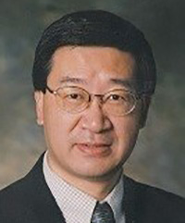
Dayong Gao
University of Washington, Seattle, USA
Presentation Title: Micro-biotransport and its great impact on the survival of living cells and tissues during the cryopreservation process
Abstract: Low temperature has been utilized to keep living biosystems dormant but potential alive for cryopreservation with tremendous scientific and biomedical applications, including cellular-gene therapy, tissue engineering, regenerative medicine, organ transplantation, as well as the conservation of endangered species, etc. However, there is a critical contradiction between the concept of cryopreservation and the experimental findings that the living biosystems can be cryoinjured to death by the cryopreservation process itself. Contrary to popular belief, the challenge to cells during the cryopreservation is not their ability to endure storage at cryogenic temperatures (below -180 ℃); rather it is the lethality associated with micro-biotransport (heat and mass transfer with phase transitions) within an intermediate zone of low temperature (-15 to -60 ℃) that a cell must traverse twice, once during cooling and once during warming. The central theme of this presentation is to report the speaker’s most-recent research work on: (1) micro-biotransport and its great impact on cryoinjury in living cells and tissues during the cryopreservation process; and (2) development of new optimal method, technology/instruments, and bio-MEMS to prevent the cryoinjury and to ensure the survival of living cells and tissues in cryopreservation.
Biography:Prof. Dayong Gao is currently the President of Society for Cryobiology (International Society for Low Temperature and Medicine). He is the Origincell Endowed Professor and Director of the Center for Cryo-biomedical Engineering and Artificial Organs, Department of Mechanical Engineering, University of Washington, Seattle, USA. Before joining the University of Washington in 2004, Dr. Gao was the Baxter Healthcare Corp Chair in Engineering and the UK Alumni Professor of Mechanical Engineering at University of Kentucky, USA. He is an Academician of the Washington State Academy of Sciences USA, and the Fellow in some International Scientific Societies. Professor Gao has been honored with numerous national and international awards, including, Basil J. Luyet Medal, USA National Cancer Society Award, American Heart Association Award, Asian American Engineer of the Year Award (USA), Bill & Melinda Gates Foundation Award, Whitaker Foundation Award, and Washington Foundation Award, etc. Currently, he serves, respectively, as the Editor-in-Chief, the Deputy Editor, and/or Editorial Board member of eight international scientific journals.
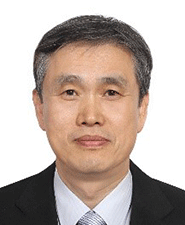
Sung Jin Kim
Korea Advanced Institute of Science and Technology
Presentation Title: Development of flexible thermal superconductors
Abstract: This talk is intended to provide a perspective and review of a journey toward a flexible thermal superconductor, which can be bent or twisted, to control heat transfer in heat generating devices of various shapes. The thermal superconductor exploits recent advances in micro pulsating heat pipes, which consists of a liquid-vapor slug-train unit oscillating within a microchannel. It will have a thermal conductivity of 1000 W/mK, 2.5 times higher than copper, and 5000 times higher than current flexible materials, and a thickness of less than 1 mm. Compared to conventional pulsating heat pipes, micro pulsating heat pipes with hydraulic diameters of less than 1 mm have interesting features like orientation independent performance. In addition, several new ideas for thermal performance enhancement in the micro pulsating heat pipes will be presented. This talk will conclude with an overview of ongoing research activities associated with a prestigious 9 year grant by Korea’s Creative Research Initiative to develop Flexible and Thin Thermal Superconductors.
Biography: Prof. Sung Jin Kim is a Professor in the Department of Mechanical Engineering at the Korea Advanced Institute of Science and Technology (KAIST). He received a Ph.D. degree in Mechanical Engineering from the Ohio State University in 1989. Until joining KAIST in July 1997, he was a group leader of Thermal Engineering Center at the IBM Tucson Laboratory for 7 years. His research group at KAIST held National Research Lab status for 5 years from 2006. Recently, he was awarded a prestigious 9-year grant by Korea’s Creative Research Initiative to develop Flexible and Thin Thermal Superconductors.
He is a member of Korean Academy of Science and Technology, and an ASME Fellow. He has received Medal of Honor for Scientists from Korean Government, Scientific Achievement Award from KSME, Excellent Teaching Awards from KAIST, two Invention Achievement Awards and five Author Recognition Awards from IBM. He edited a book entitled Air Cooling Technology for Electronic Equipment.
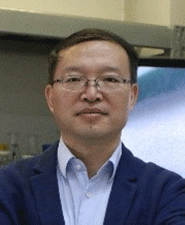
Jing Liu
Tsinghua University
Presentation Title: Nano Liquid Metal as New Generation Electronic Cooling Materials
Abstract: The newly emerging functional materials of room temperature liquid metal and its alloy were initially introduced for the advanced cooling of computer CPU, which later was extended into rather diverse areas such as general high flux or large power cooling, thermal interface material, waste heat recovery, kinetic energy harvesting, printed electronics, 3D printing, biomedical technologies and soft machines etc. Facing that the thermal physical properties of the formerly developed liquid metals were still somewhat limited due to their inherent characteristics encountered, we had ever proposed a new conceptual strategy to revolutionize existing technologies which can be termed as nano liquid metal. Through suspending micro or nanometer-sized particles or fillers into liquid metal, a group of very unconventional capabilities for the fabricated mediums can be enabled. The multi-mode performances of nano liquid metals lie in the outstanding properties of the base fluids of liquid metals such as low melting point, large thermal and electrical conductivity as well as tremendous desirable physical or chemical behaviors. Through taking full use of nanotechnologies, liquid metal can be molded into many outstanding advanced functional materials like highly conductive or compliant coolant, thermal interface grease and phase change soft material etc. According to the specific needs and preparation process, such liquid or composites could exhibit superior fluidic, thermal, electrical, magnetic, chemical, mechanical, and biomedical properties which are much superior than that of conventional coolants or nano materials. This guarantees the versatile adaptabilities of nano liquid metal materials. The present talk presents the basic features of nano liquid metal, its typical fabrication strategies like field induced particle internalization effect, as well as scientific challenges. A group of successful practices and perspective applications of such materials in thermal science area will be introduced. The fundamental micro/nano scale heat transfer mechanisms lying behind will be interpreted.
Biography: Prof. Jing Liu is a jointly appointed Professor of Tsinghua University (THU) and Technical Institute of Physics and Chemistry, Chinese Academy of Sciences (CAS). He simultaneously received his double B.S. degrees in Engineering and Physics in 1992, and Ph.D. in 1996, all from THU and had ever performed visiting researches at Purdue University and MIT. Dr. Liu works intensively at the interdisciplinary areas among liquid metal, biomedical engineering, and thermal science and pioneered a group of very fundamental discoveries in the area. His endeavors on liquid metal chip cooling, printed electronics, biomaterials, and soft machines initiated many game changing technologies which were frequently featured by worldwide science news. Dr. Liu’s inventions on hybrid freezing-heating tumor therapy machine and many mobile health care devices have led to diverse clinical uses. He is an author of ten popular books with one reprinted five times, over five hundred journal articles with over twenty selected as cover story, and holds more than 130 granted invention patents. Dr. Liu is a recipient of numerous awards like: The William Begell Medal, R&D 100 Awards Finalist, 2010-2011 Best Paper of the Year Award from ASME Journal of Electronic Packaging, CCTV 2015 Top Ten Figures in Science and Technological Innovation, and six times highest teaching award from CAS, etc.
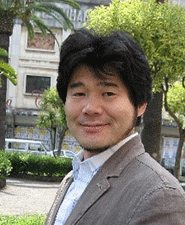
Shigeo Maruyama
The University of Tokyo
Presentation Title: Synthesis and solar cell applications of single-walled carbon nanotubes co-axially wrapped with mono- and few-layer boron nitride nanotubes
Abstract: We have synthesized a new coaxial nanotube structure, in which mono- or few-layer hexagonal boron nitride nanotube (BNNT) seamlessly wrap around a single-walled carbon nanotube (SWCNT), and result in an atomically smooth coaxial tube consisting two different materials [1]. TEM-EELS clearly demonstrated the BNNT-SWCNT coaxial structure. We have tried various morphologies of SWCNTs as starting material, e.g. vertically aligned array, horizontally aligned array, suspended SWCNTs, and dry-deposited random network films. We can clearly observe the coaxial structure from originally isolated SWCNTs. Though TEM nano diffraction analysis, we found no correlation between chiral angle of inner SWCNT and outer BNNT for ‘double-walled’ SWCNT-BNNT. We concluded that these are one-dimensional van der Waals heterostructure. From optical observations, such as absorption, Raman and photoluminescence, we can confirm that the SWCNT inside the BN nanotube retain the original optical properties of SWCNT. We have further developed the 1D coating CVD for transition dichalcogenide nanotubes, such as MoS2 nanotube. We can grow MoS2 nanotubes around relatively large diameter SWCNT or SWCNT @BNNT [1]. Applications of these 1D heterostructure material in next generation solar cells [2-4] will be discussed.
Biography: Prof. Shigeo Maruyama received Ph.D. from School of Engineering at the University of Tokyo in 1988. He worked as a research associate from 1988, a lecturer from 1991, an associate professor from 1993, a full professor from 2004, and a distinguished professor from 2014 at the University of Tokyo. From April 2015, He is appointed as a cross-appointment fellow for Advanced Industrial science and technology (AIST). From 2016, He is also serving as guest professor at Peking University.
He has been serving the president of “The Fullerenes, Nanotubes and Graphene Research Society” since 2011, and the co-chair of steering committee of Carbon Nanotube conferences (International Conference on Science and Application of Nanotubes and Low-Dimensional Materials) since 2016.
Current research topics are growth, optical characterization, thermal characterization and solar cell application of carbon nanotubes and graphene. Recently, He has successfully grow Boron-nitride nanotubes on single-walled carbon nanotubes. In addition, he can grow transition metal dichalcogenides nanotubes based on SWCNT template. Now, he is proposing the one-dimensional heterojunction material.

Yongchen Song
Dalian University of Technology
Presentation Title: Microscopic Observation of Mass Transfer Obstruction during Gas Hydrate Formation and Decomposition
Abstract: Gas hydrates are crystalline inclusion compounds, where light species molecules are trapped in water cages. Mass transfer during hydrate formation and decomposition plays an important role in gas hydrate production and hydrate flow assurance. Microfocus X-ray CT and synchrotron X-ray CT with sub-micrometer voxel size were used to study the time-resolved evolutions of gas hydrate microstructures during in-situ hydrate formation and decomposition. The full process of hydrate reaction at the phase interface is captured and followed, indicating the diffusion-limiting mechanism of hydrate phase transition. The initial formation of gas hydrate is found to occur at the gas-ice interface in directions of both inward and outward. Once a hydrate shell has formed across the interface, hydrate formation rate is limited by the mass transfer of gas across the hydrate shell. The resistance of mass transfer increases with hydrate shell thickening. The thickness range of hydrate shell at the end of experiments is 40-60 μm, showing a positive correlation with temperature. A hydrate shell growth model on ice sphere surface is developed. Using this model, the gas effective diffusion coefficient and reaction rate constant are obtained. Moreover, the in-situ hydrate decomposition is initiated at the gas-hydrate interface, with the hydrates close to the sand surface largely unchanged. Free water from decomposition gradually accumulates at the decomposing hydrate surface, isolating the hydrates from the gas phase. The very low solubility and diffusivity of gas molecules in water strongly limit the out-diffusion of released gas into the gas phase, resulting in declining decomposition rate as the water layer thickens. A gradient of gas concentration in the water layer is directly observed, indicating a metastable enrichment of gas water. The resulting diffusion-limiting mechanism of in-situ gas hydrate decomposition is of importance for gas hydrate production by depressurization from marine sediments.
Biography:Prof. Yongchen Song is a currently Professor at Dalian University of Technology (DUT), the vice-president of DUT, and the director of the Key Laboratory of Ocean Energy Utilization and Energy Conservation of Ministry of Education. He received a doctorate from DLUT in 1992. After a lecturer in DUT, he went to Japan in 1996, and worked at Nagoya University as a visiting scholar from 1997 to 1998. In 2000, he severed as a director researcher for Research Institute of Innovative Technology for the Earth (RITE). In 2005, he came back to DLUT as a professor. His current interests focus on the fundamental exploitation research of natural gas hydrate and the technical research of carbon dioxide capture and storage. He has published over 150 SCI papers on these topics. He developed an improved model to predict the methane hydrate equilibrium in marine sediment environment, and analyzed the mass transfer limitations of gas hydrate decomposition process in gas-rich sedimentary matrix. In addition, he independently designed a novel apparatus for in situ measurement of thermal conductivity of hydrate-bearing sediments, and the model for effective thermal conductivity prediction he improved can suitably predict the measured data. He applies pore network models combined with X-ray computed tomography to investigating the index properties and percolation characteristics of porous media containing hydrates. The triaxial testing apparatus he developed is used to investigate the mechanical behaviors of marine methane hydrate-bearing sediments, demonstrating the effect of exploitation on the stability of hydrate–bearing sediments. His studies provide a basic knowledge for natural gas hydrate exploitation in the South China Sea.
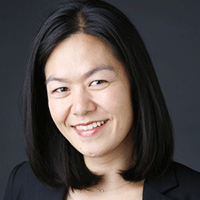
Evelyn N. Wang
Massachusetts Institute of Technology
Presentation Title: Nanoengineered Materials for Enhanced Liquid-Vapor Phase Change
Abstract: Liquid-vapor phase change is essential in many thermal energy conversion applications. However, effectively utilizing these processes requires fine manipulation of interfacial transport. In the first part of the talk, we discuss evaporation from ultra-thin nanoporous membranes. Fundamental understanding during evaporation remains limited to date as it is generally challenging to characterize the heat and mass transfer at the interface, particularly when the heat flux is high (> 100 W/cm2). We fabricated ultra-thin (≈ 200 nm thickness) nanoporous (≈ 130 nm pore diameter) membrane devices which reduced the thermal-fluidic transport resistance and accurately monitored the temperature of the liquid-vapor interface. At steady state, we demonstrated high heat fluxes across the interface (≈ 500 W/cm2) with pure evaporation into an air ambient and elucidated the importance of convective transport caused by evaporation itself. In the second part, we discuss condensation with low surface tension liquids. Low surface tension condensates pose a unique challenge since they often form a film, even on hydrophobic coatings. Lubricant infused surfaces (LIS) represent a potential solution, where a lubricant immiscible with the low surface tension condensate is infused into a rough structure on the condenser surface to repel the condensate. We used LIS to demonstrate a 5x improvement in heat transfer for low surface tension fluids compared to filmwise condensation. These works suggest the potential opportunities for significant energy savings in device thermal management, heating and cooling, and power generation.
Biography: Prof. Evelyn N. Wang is the Gail E. Kendall Professor and Department Head in the Mechanical Engineering Department at MIT. She received her BS from MIT, and MS and PhD from Stanford University in Mechanical Engineering. From 2006-2007, she was a postdoctoral researcher at Bell Laboratories. Her research interests include fundamental studies of micro/nanoscale heat and mass transport and the development of efficient thermal management, solar thermal energy conversion, and water harvesting systems. Her work has been honored with several awards including the 2012 ASME Bergles-Rohsenow Young Investigator Award, the 2016 ASME EPPD Women Engineer Award, and the 2017 ASME Gustus L. Larson Award. She is an ASME Fellow.

Ruzhu Wang
Shanghai Jiao Tong University
Presentation Title: Adsorbents related to energy, water, and air
Abstract: Adsorbent is usually in the form of solid with nanoscale porous structures. Adsorption is a rate-controlled process, related to nanoscale heat and mass transfer that highly depends on the boundary conditions. Highly porous adsorbents like silica gel, molecular sieve, activated carbon (fiber), alumina, and MOF could capture gas molecules and release sorption heat through physical adsorption, which promote their widely applications in thermal processes, such as cooling, heating, energy storage, air water harvesting, humidity control, air cleaning and thermal treatment. However, the physical adsorbent is usually limited by its low adsorption capacity and weak adsorption kinetics. Thus it is essential to tailor the structural and thermal properties of the nanoscale pore adsorbent, and even use composite adsorbents, to adapt to real applications to achieve efficient sorption in handling with water vapor, ammonia, CO2 and etc, Reasonable thermal design in device level should be taken into consideration. Here, a strategy to synthesize efficient adsorbents and the principle to select optimal adsorbent-adsorbate working pairs for various adsorption technologies and their typical applications are introduced and discussed. This work shows that adsorbents are closely related to energy, water and air, some promising applications could be realized.
Biography: Prof. Ruzhu Wang (R. Z. Wang), born in Dec.1964, graduated from Shanghai Jiao Tong University (SJTU) in 1984, 1987 and 1990 for his bachelor , master and PhD degrees. He was promoted as associate professor in 1992, full professor in 1994 in SJTU.
He has written 10 Books and more than 500 co-authored SCI papers, his ISI h-index is 62. His contributions include sorption heat pumps, CCHPs, solar heating and cooling, and green building energy systems. He has won Chinese National Research Awards in 2010 and 2014 respectively. Due to his most noteworthy contribution to Refrigeration globally, he was honored to receive the J & E Hall International Gold Medal from the Institute of Refrigeration (UK) in 2013, Asia Refrigeration Academic Award in 2017. Due to his outstanding contributions in the field of heat and mass transfer for refrigeration/cryogenics and energy systems, he was awarded the Nukiyama Memorial Award in 2018.
He had been appointed as the director of Institute of Refrigeration and Cryogenics of SJTU since 1993. Currently he is also the Director- Engineering Research Center of Solar Energy, MOE China, Vice dean of SJTU Energy Institute. His research group has awarded as Excellent Innovative Team of Energy Research from MOST China in 2014 and NSFC in 2015.
Prof. Wang is currently the vice president of Chinese Association of Refrigeration, vice president of Chinese Society of Heat and Mass Transfer, deputy editor-in-chief of Energy, and regional editor of International Journal of Refrigeration.
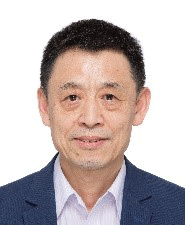
Yuying Yan
University of Nottingham
Presentation Title: Nature inspired solutions help drive research progress – from heat transfer to downhole oil-water separation
Abstract: Nature always tends to act in the simplest way. In the nature world, plants and animals, which have evolved over time of millions years to best adapt to the environment, do not waste but tend to save energy, and they are sustainable. To have a micro insight, plants or animals normally interact effectively with the surrounding environment by exchanging energy and mass across their cuticles of specific micro or even nano scale structures with functions to achieve perfect energy balance. The lecture try to demonstrate that nature inspired solutions could help drive research progress. Examples or stories of heat transfer enhancement will be briefly introduced and a recent study of downhole oil-water separation will be explored in details.
Biography: Prof. Yuying Yan was awarded his PhD in Mechanical Engineering at City University of London in 1996, and currently is Professor of Thermofluids Engineering, L.D.S. Chair Professor and Director of Fluids & Thermal Engineering Centre at University of Nottingham. He carries out wide range research in multiphase flow, heat transfer, and energy thermal management, as well as cross-disciplinary subject of biomimetics in terms of nature-inspired solutions for flow & heat transfer. He was chair of the first International Symposium of Biomimetic Functional Surfaces and Fluids (BFSF) in 2009 and created the first UK-China joint laboratory of BFSF in 2009. He is also the director of Industrial Joint Laboratory of Thermal Management & Heat Transfer for Low Carbon Vehicles at University of Nottingham. His research has been sponsored by UK EPSRC, Royal Society, Royal Academy of Engineering, Innovate UK, APC and European Commission, as well as many industrial companies including Siemens, etc. His recent 5 years research portfolio is about £7million. He is an elected Fellow and Deputy General Secretary of International Society of Bionic Engineering, UK Heat Transfer Committee member, and UK EPSRC Peer Review College. He was a member of EU ERC’s Advanced Research Grant Panel (2014-2017). He has supervised more than 30 PhD students and published more than 200 journal papers with over 4000 citations. He has chaired or co-chaired many international conferences/events, such as ICBE2010, ISHT2014, ICBE2016, ISHT&HPC2016, 3rdISFTE2017, and 16UKHTC2019.

Xing Zhang
Tsinghua University
Presentation Title: Raman Spectroscopy Method for Measuring the Thermophysical Properties of Individual Nanoscale Materials
Abstract: The measurement of the thermophysical properties of nanomaterials has been an urgent and key issue of heat transfer research. Electrical methods have been applied to measure the thermal properties of nanowires. The contact methods have common difficulties in sample preparation and are not appropriate for two-dimensional material measurement. This talk will introduce Raman spectroscopy method, as a non-contact method, which has been proved to be a more simple and effective method to measure the thermophysical properties of nanomaterials, both applicable for one-dimensional and two-dimensional materials. Characteristic Raman band shifts of many materials change linearly with temperature. And different materials have different Raman characteristic peaks. Hence, for supported nanomaterials, the temperature of the sample and its substrate can be determined simultaneously. Therefore, the Raman spectroscopy method can be used to determine the thermophysical properties of suspended/supported nanomaterials. We develop several steady-state Raman spectroscopy methods to determine the thermal conductivity and the thermal contact resistance of the nanomaterials. These steady-state methods have already been used to characterize the thermophysical properties as well as the corresponding size effects of carbon nanotube, graphene, and other nanomaterials. The steady-state Raman spectroscopy methods need electric heating or the measurement of laser absorptivity. To avoid them and also to characterize the thermal diffusivity, we propose an unsteady-state method, called the laser flash Raman spectroscopy method. The influence of the laser absorptivity can be eliminated by the nondimensionalized method. The laser flash Raman spectroscopy method has been used to determine the thermal diffusivity of the carbon nanotube, graphene, and other nanomaterials. Nevertheless, the temporal resolution of the laser flash Raman spectroscopy method is limited by the pulse width, which is ∼ 10 ns, cannot match the requirement of supported nanomaterials. We further develop the dual-wavelength laser flash Raman spectroscopy method, separating the heating and probing pulses and controlling the relative delay time. The probing pulse will detect the transient Raman signal of nanomaterials and substrate simultaneously at varied delay time. The temporal resolution can be within 100 ps. The dual-wavelength laser flash Raman spectroscopy method has already be used to measure the thermophysical properties of silicon nanofiber.
Biography: Prof. Xing Zhang is the Director of the Institute of Engineering Thermophysics in the School of Aerospace Engineering at Tsinghua University, Beijing, China. He received his Ph.D. degree from Tsinghua University in 1988 and worked as a Lecturer at Southeast University after his graduation. From 1990 to 2006, he worked as a Research Associate, an Assistant Professor and an Associate Professor at Kyushu University in Japan. He returned to Tsinghua University as a Professor in 2006. His current research interests include micro/nanoscale heat transfer, thermophysical properties of nanostructured materials and the efficient use of wind/solar/hydrogen energy sources. He has published over 300 refereed journals and conference publications, and delivered more than 50 Plenary, Keynote, and Invited Lectures at major technical Conferences and Institutions. He serves as the President of Assembly for International Heat Transfer Conference (AIHTC) and an Associate Editor of International Journal of Heat and Mass Transfer. He received the “Significant Contribution Awards” from the 10th Asian Thermophysical Properties Conference in 2013, the “National Natural Science Award (Second Class)” from the State Council of the People's Republic of China in 2011, and the “Best Paper Award” from the Heat Transfer Society of Japan in 2008.

Zhuomin Zhang
Georgia Institute of Technology
Presentation Title: Recent Advances in Nanoscale Thermal Radiation
Abstract: Radiative heat transfer between closely spaced objects can be greatly enhanced at nanoscale separation due to photon tunneling and the enhanced density of states. Furthermore, the interaction of electromagnetic waves with micro/nanostructured materials can potentially modify their far-field radiative properties. Micro/nanoscale thermal radiation concerns both near-field radiative heat transfer between closely spaced objects and the interaction of electromagnetic waves with micro/nanostructured materials that could potentially modify the far-field radiative properties. Graphene and other two-dimensional materials offer possibility to further enhance near-field radiative heat transfer. Nanoscale thermal radiation has promising applications in advanced energy harvesting, nanomanufacturing, thermal control and management, and high-resolution thermal mapping. Significant developments have been made in recent years in the field of micro/nanoscale thermal radiation, both theoretically and experimentally. This presentation will give an overview of the advances and status of this exciting multidisciplinary field. Theoretical challenges and application potential will also be addressed.
Biography: Prof. Zhuomin Zhang earned a Ph.D. degree from MIT and worked at NIST and University of Florida prior to joining Georgia Tech in 2002. He received his B.S. and M.S. degrees from the University of Science and Technology of China (Hefei). His research interests are in micro/nanoscale heat transfer especially nanoscale thermal radiation for energy conversion and temperature measurement. He has written a book on Nano/Microscale Heat Transfer (McGraw-Hill, 2007), co-authored over 180 journal papers, and given over 380 invited and contributed presentations. A number of his former students have established independent careers at major universities or industry in the United States, China (mainland and Taiwan) and South Korea. In addition, he has supervised many visiting scholars, postdoctoral fellows and undergraduate student researchers. Dr. Zhang currently serves as an associate editor of the Journal of Thermophysics & Heat Transfer and the Journal of Quantitative Spectroscopy & Radiative Transfer. He served as the Program Chair of the ASME 3rd Micro/Nanoscale Heat & Mass Transfer International Conference (Atlanta, March 2012), Chair of the 2nd International Workshop on Nano-Micro Thermal Radiation (Shanghai, June 2014), and General Chair for the ASME 5th Micro/Nanoscale Heat & Mass Transfer International Conference (Singapore, January 2016). Dr. Zhang is a Fellow of ASME, AAAS, and APS, and an Associate Fellow of AIAA. He was a recipient of the 1999 Presidential Early Career Award for Scientists and Engineers (PECASE) and the 2015 ASME Heat Transfer Memorial Award.
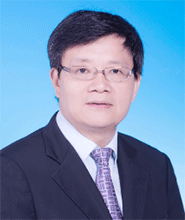
T. S. Zhao
Hong Kong University of Science and Technology
Presentation Title: Using Thermo-fluid Science to Tackle the Energy Storage Challenge
Abstract: The combination of energy shortage and climate change is one of the most complex challenges the world, as a whole, has had to face. The next 50 years is a vital period for human civilization and it is imperative that we revolutionize the way we produce and store energy and incorporate renewables as our primary source of energy. This talk will provide a snapshot of the future of the sustainable energy landscape and identify several game-changing technologies that will facilitate the widespread deployment of renewables. In particular, we will highlight our recent advances in redox flow batteries, and lithium-aoxygen battery technologies achieved through an interdisciplinary approach that combines thermal-fluid science and electrochemistry. The scientific issues and practical challenges pertaining to this advanced battery will be discussed, with a particular emphasis on how the challenges can be addressed using thermos-fluid sciences.
Biography: Prof. T.S. Zhao is currently the Cheong Ying Chan Professor of Engineering and Environment, the Chair Professor of Mechanical & Aerospace Engineering at HKUST, the Director of the HKUST Energy Institute, and a Senior Fellow of the HKUST Institute for Advanced Study. He is an elected Fellow of the American Society Mechanical Engineers (ASME), Fellow of the Royal Society of Chemistry (RSC), and a Highly Cited Researcher by Thomson Reuters (2014, 2015, 2016, 2017, 2018). Professor Zhao combines his expertise in research and technological innovation with a commitment to creating clean energy production and storage devices for a sustainable future. He has made seminal contributions in the areas of fuel cells, advanced batteries, multi-scale multiphase heat and mass transport with electrochemical reactions, and computational modeling. In addition to 5 edited books, 9 book chapters and over 70 keynote lectures at international conferences, he has published 331 papers in various prestigious Journals. These papers have collectively received more than 13,000 citations and earned Prof Zhao an h-index of 62 (Web of Science). In recognition of his research achievements, Prof Zhao has in recent years received many awards, including the 2014 Distinguished Research Excellence Award (HKUST), two State Natural Science Awards, Ho Leung Ho Lee Scientific and Technological Progress Award (2018), the Croucher Senior Fellowship award, the Overseas Distinguished Young Scholars Award (NSFC), and the Yangtze River Chair Professorship, among others. In the international community, Prof Zhao serves as Editor-in-Chief of Applied Thermal Engineering, Executive Editor of Science Bulletin, and Editor of RSC’s Energy & Environmental Science. He has served as an editorial board member for Energy & Environmental Science, Journal of Power Sources, and other 10 prestigious international Journals.